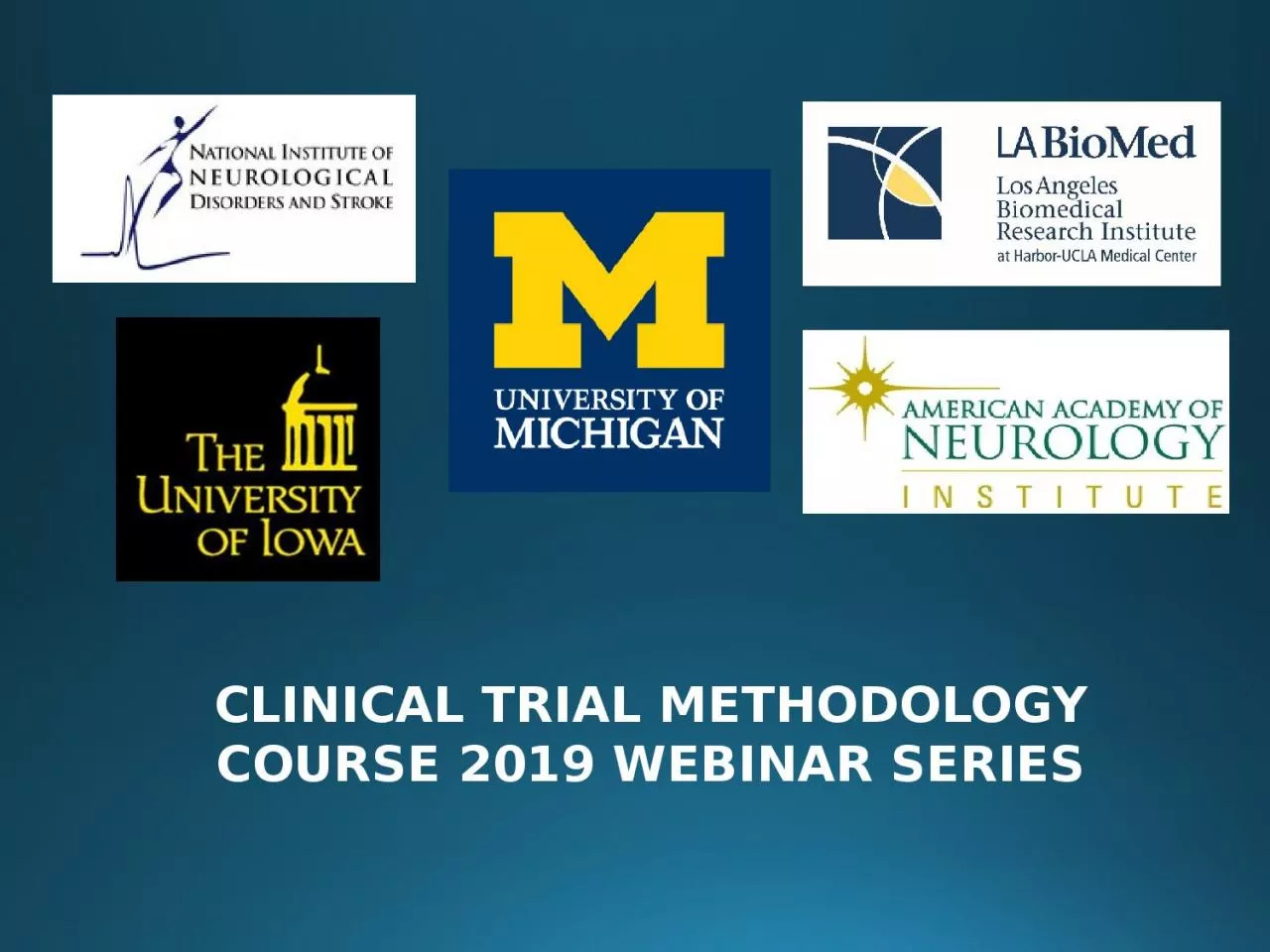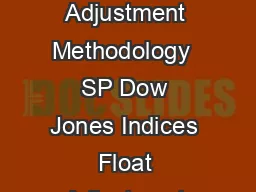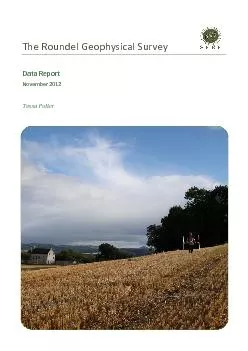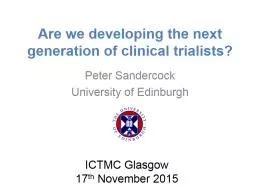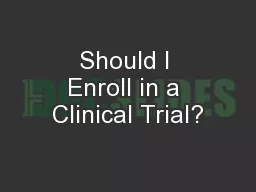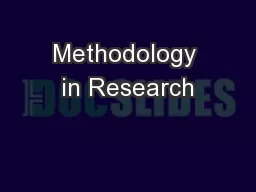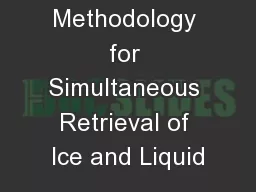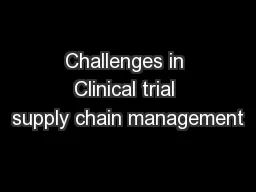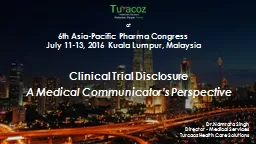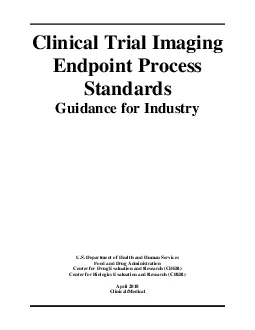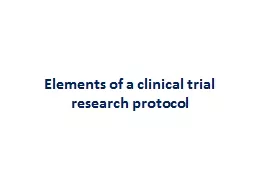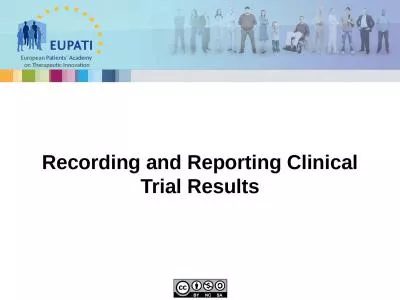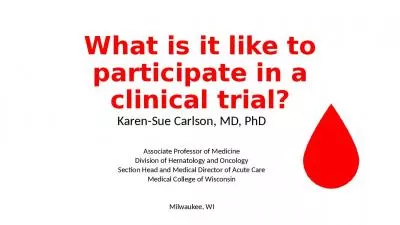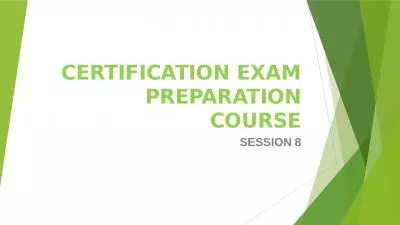PPT-CLINICAL TRIAL METHODOLOGY COURSE
Author : singh | Published Date : 2022-06-18
2019 WEBINAR SERIES AAN CME Disclosure The presenters have no commercial or financial interests relationships activities or other conflicts of interest to disclose
Presentation Embed Code
Download Presentation
Download Presentation The PPT/PDF document "CLINICAL TRIAL METHODOLOGY COURSE" is the property of its rightful owner. Permission is granted to download and print the materials on this website for personal, non-commercial use only, and to display it on your personal computer provided you do not modify the materials and that you retain all copyright notices contained in the materials. By downloading content from our website, you accept the terms of this agreement.
CLINICAL TRIAL METHODOLOGY COURSE: Transcript
Download Rules Of Document
"CLINICAL TRIAL METHODOLOGY COURSE"The content belongs to its owner. You may download and print it for personal use, without modification, and keep all copyright notices. By downloading, you agree to these terms.
Related Documents

